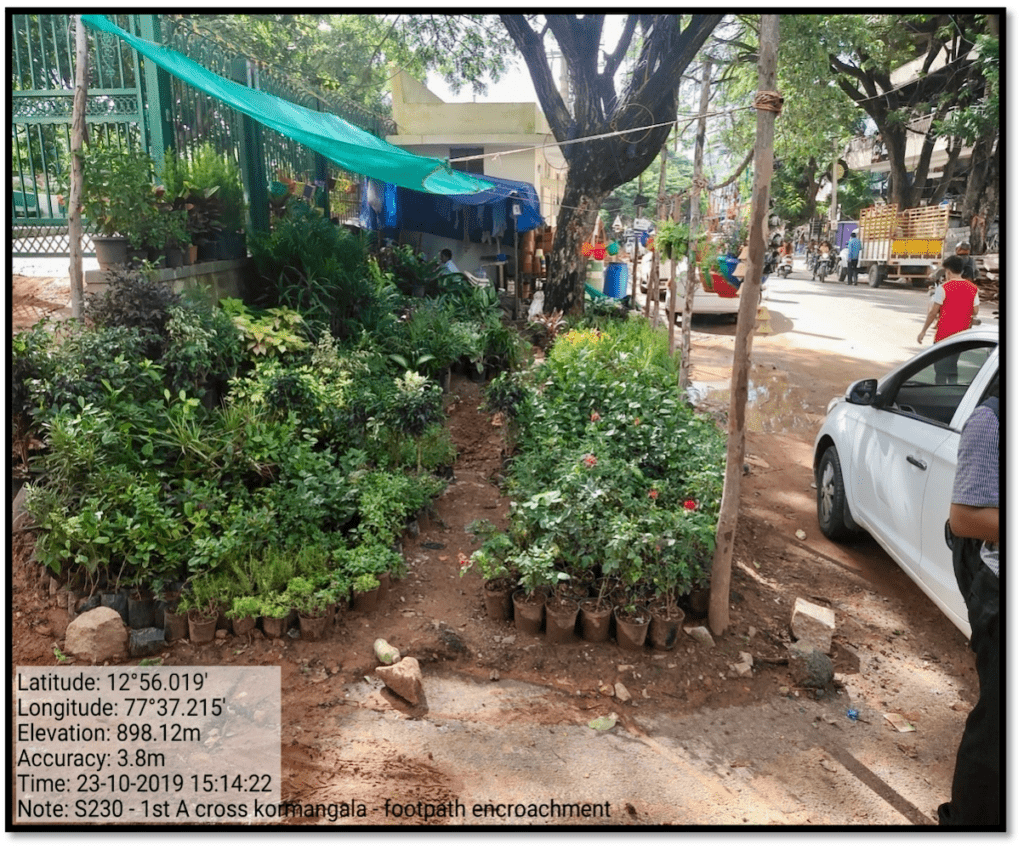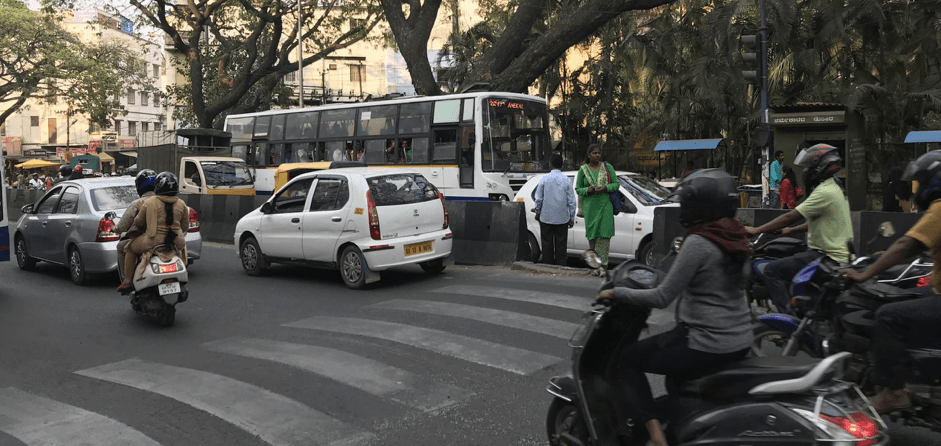“India tops the world in terms of the number of people killed and ranks number 3 as per number of persons injured in road accidents”, Union Minister for Road Transport and Highways Nitin Gadkari recently admitted in Parliament. This despite the passing of a comprehensive Road Transport and Safety Bill in 2014, to reduce road accidents.
Karnataka’s record on road safety reflects this grim reality. Annually, approximately 11,000 people die and over 50,000 sustain injuries from road accidents in the state.
One way to be aware of issues of impropriety and poor performance in local government bodies and departments is to track the audit reports from agencies like the Comptroller and Auditor General of India (CAG).
This article is the seventh in the Series: Understanding Public Project Audits, by experts from the Indian Accounts and Audit Service.
The Karnataka government adopted the Karnataka State Road Safety Policy in 2015 and followed it up with the Karnataka State Road Safety Authority Act, 2017. The Act provided for the establishment of the Karnataka State Road Safety Authority (KSRSA) to give an impetus to achieving the objectives of the Road Safety Policy.
The office of Accountant General (Audit II) Karnataka conducted a performance audit, covering the period April 2014 to March 2021 to ascertain:
- Whether the planning and implementation of the Karnataka State Road Safety Policy was effective
- Whether the financial management, coordination and monitoring of Karnataka State Road Safety Authority was efficient and effective
- Whether the actions taken by the Agencies and Government Departments to reduce the accidents and injuries were adequate
Audit scrutinised records maintained at KSRSA and the Police and Transport Departments for details related to road accidents and registration/renewal of driving licence/learning licence respectively. The jurisdiction of KSRSA extends to National Highways (NHs), State Highways (SHs), Major District Roads (MDRs) and BBMP Roads.
Accordingly, a statistical sample was drawn from these different categories of roads taking into account the number of accidents and black spots i.e. a stretch of a road of about 500m length wherein either five road accidents or 10 fatalities took place during the last three years. Joint inspection was carried out with the jurisdictional engineer/police staff to ascertain the extent of safety measures implemented.

Read more: Roads not completed, users overcharged — the many potholes in implementing highway projects
Important observations:
- The foremost objective of the 2015 Karnataka State Road Safety Policy (KSRSP) was to achieve a reduction in the number of accidents and mortality by 25% and 30% respectively by 2020. However, there was no reduction in the number of accidents till 2019. But a reduction was seen during 2020 on account of lockdown restrictions that prevailed during the year. Yet, the targets for reduction in fatal accidents were not realised when compared to 2015 figures.
- Audit collected data pertaining to the trends of accidents that occurred in different categories of roads such as National Highways, State Highways and Other Roads in the state. Analysis of accident data revealed that NH roads (7,652 kms) registered 1.80 accidents per kilometre which was way higher compared to SH roads (28,985 kms) and other category roads (2,94,462 kms) which registered 0.36 accidents and 0.06 accidents per kilometre respectively.
- Joint inspection of sampled road stretches revealed that BBMP roads were the most hazardous for road users with an average of 19 to 20 hazards per kilometre followed by the SHs, MDRs and NHs with 8.87, 8.43 and 7.39 hazards per kilometre respectively.
- In 1400 kms of Arterial and Sub-Arterial roads in BBMP area, Audit found gross violation of building plan regulations of the urban plan development department. Violations included inadequate parking facilities, basements of complexes of commercial and residential buildings being used for shops. As per regulations the basement should be reserved for vehicle parking only. In 159 out of 253 road stretches, pavement (area at the side of a road for people to walk on) conditions were sub-standard and suffered deficiencies such as non-marking of lines, damaged pavements, drainage issues etc in 810 locations.

- Rules for implementation of provisions of the KSRSA Act, 2017 and for carrying out the functions of KSRSA headed by the chief secretary were framed as late as October 2021 i.e. four and half years after the Act was passed. The guidelines to prepare an Action Plan for the working of the District Road Safety Committees (DRSCs) were not issued by KSRSA till March 2021. Rules and regulations are essential for efficient and effective discharge of duties/responsibilities by an authority. Lack of guidelines render the act ineffective as KSRSA was established with the objective to address the gaps in planning, policy making and implementation in ensuring road safety.
- Road Management Authorities e.g., NHAI, PWD, KRIDL etc. need to ensure that roads conform to Indian Road Congress (IRC) code specifications and MoRTH guidelines. However, inaccuracies were observed in the Road Asset database which is supposed to contain all the details about a road, such as the origin and termination point with total length in kilometres, width of the pavement, whether one road overlaps with another, details of shoulders and Right of Way (RoW), median, sign boards etc. The Department could not trace 11 out of 198 road samples primarily due to the actual length of the road being lesser than what was recorded in the database.
Read more: Road maintenance: What BBMP does not track
- The Indian Road Congress specifies a clear width of 1.8m for footpaths whereas we noticed that footpaths were not provided in 43% of the 1400 km road length of Arterial and Sub-Arterial roads in BBMP. Local municipal bodies like BBMP are responsible for ensuring construction and maintenance of safe footpaths for pedestrians. Joint Physical Inspection revealed footpaths were used for public and private purposes (installation of electrical transformers, junction boxes of telephone companies, public toilets).

- MoRTH (February 2017) directed states to develop a Comprehensive Road Accident Database Management System (RADMS) where identification and documentation of all hazards at accident spots was to be done. However, such a database was lacking.
- In 22 out of 46 black spots (accident zone or high-risk spot), action was not taken for rectification/repair. In 20 black spots identified in 2016, 179 accidents occurred between 2017-2020 resulting in 35 fatalities and 257 injuries. A case in point relates to an accident which occurred prior to 2016 on a National Highway within Ballupete village limits in Hassan District. The road stretch was in very bad condition with multiple potholes/cracks, and a big open drain. Subsequently, 44 accidents occurred between January 2016 and March 2020, within 500 metres of this spot resulting in seven deaths and 43 injuries. The government replied (August 2021) that provision of signal lighting, thermoplastic painting, clear demarcation of the island portion with kerb stones, provision of box culvert and repair of pipelines had been done.
- Crash Barriers fitted with delineating reflectors are to be provided on high-speed highways to prevent accidents. In 168 out of 253 road stretches inspected by the auditor, crash barriers were either absent or were broken in 639 hazardous locations. The hazards remained without rectification as the concerned Road Managing Authorities did not consider them as potential black spots needing rectification. In the exit conference, the government stated that Highway Authorities have been instructed to take necessary action to rectify the defects pointed out by the Auditor.

- Audit noticed deficiencies in testing and issue of Driving Licences. The Act stipulated 24 parameters for testing the driving skills/abilities of each learner for issue of a driver’s licence. However, only one Motor Vehicle (IMV) Inspector was nominated to conduct the driving tests in each RTOs/ARTOs.
- Audit noticed in 42 RTO offices, 5,344 DLs were given in a single day. Considering the availability of one IMV for testing 24 parameters, the number of licences issued per office is impractical and unrealistic. A maximum of 25-30 licences could be issued in one RTO per day as an IMV may require at least 15 to 20 minutes per applicant.
- 62 RTOs did not have fully automated test tracks which forced them to conduct unscientific driving licence tests on public roads.
- In case of transport vehicles, a Fitness Certificate (FC) is issued for a period of two years from the date of registration and is renewable. At the time of renewal, fitness tests must be conducted by IMVs. Audit noticed fitness certificates for vehicles were issued without following the rules which stipulated testing of 17 components. Data analysis showed that though FCs of 1,484 transport vehicles expired before March 2014, they continued to ply on the roads during the April 2014 -March 2021.
- Awareness generation activities which were a critical component of the Karnataka Road Safety Policy were not conducted till 2018-19. National Road Safety Week in India was organised every January by the National Safety Council of India (NSC) to ensure India’s roads become accident-free zones. However, details of the activities conducted by the authorities between 2014-2019 were not available on record.
- As per directions, licences are to be suspended for a period not less than three months if the offence involves:
- Driving at excessive speeds
- Carrying excess loads
- Driving under influence of alcohol or drugs
- Using a mobile phone while driving. But DLs were suspended only in case of offences related to overloading. Offences noticed were also not fed into the database and as a result repeat offenders were not tracked.
- The KSRSA Act stipulated the establishment of a dedicated fund for expenditure on matters connected to road safety by charging a Road Safety Cess i.e., collection of one-time cess not more than Rs 1000 at the time of vehicle registration. Though Rs. 480.50 crore accrued to the Road Safety Fund from 2017-18 to 2019-20, the Authority approved works amounting to just Rs 100 Crore during 2020-21. Further, there was no documentation to prove the utilisation of this Rs 100 crore.
- Health department has a very important role in reducing deaths by providing timely medical care within the first hour (“Golden Hour”) of injury. Establishment of Trauma Care Centres (TCCs) is crucial for severe trauma patients. The KSRSA did not consider aspects such as defining a reasonable distance for establishment of TCCs, provision of cranes, implementation of cashless treatment for 48 hours etc. There was no initiative till March 2021 to establish TCCs in 22 Districts. Hence, the post-crash response system was weak.
The Government acknowledged the findings and accepted the recommendations in the Report which was placed at the state legislature on 16th March 2022. The full report can be accessed here.
[The authors are from the Indian Audit & Accounts Service. Views expressed are personal.]